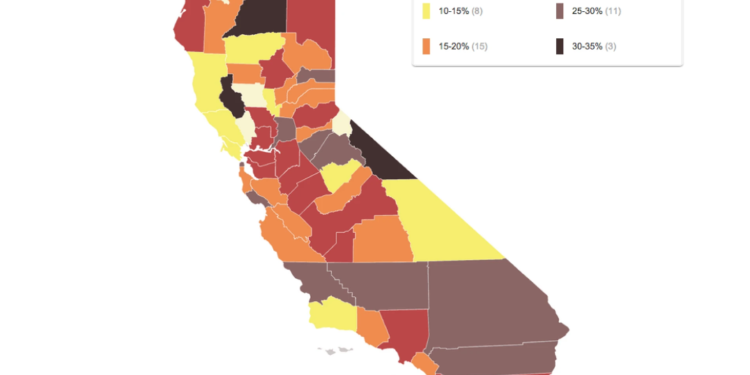Oct 6, 2024 Story by: Editor
SAN DIEGO (AP) – A state report released a few years ago reveals that African-American elementary students in California were nearly four times more likely to be chronically truant compared to the overall student population during a school year.
The California Attorney General’s office provided the report, marking the first time the data has been categorized by race and income levels. Officials emphasize that this detailed data is essential for addressing the issue effectively.
Factors such as poverty and school suspensions contribute significantly to the problem.
In the 2013-2014 school year, over 250,000 elementary students missed 10 percent or more of their school days, equating to around 18 or more missed days. The highest rates of absenteeism were found among kindergarten and first-grade students, a critical period when children are learning to read, according to experts.
The report found that 37 percent of black elementary students in the sample were truant, a rate higher than any other subgroup, including homeless students, and about 15 percentage points above the overall student rate. Across the state, approximately 73,000 black elementary students were recorded as truant last year.
California law defines truancy as being absent or arriving over 30 minutes late without a valid excuse three times in a school year. Students who miss 10 percent of the school year without a justifiable reason are considered chronically truant, a condition that experts warn increases the risk of academic failure.
Former-Attorney General Kamala D. Harris advocated for the state to adopt a system that tracks individual students’ absentee rates, as California is one of the few states without such a system. Legislation for this initiative is currently awaiting approval by the governor.
The Attorney General’s office collaborated with Aeries Student Information System, a private company, to analyze data from 32 school districts. The study revealed that nearly 90 percent of students who missed 36 or more school days came from low-income households.
“Because the state is not collecting this critical information, the attendance crisis among African-American children has largely remained hidden,” the report stated. “Therefore, we cannot conclusively explain the stark contrast between African-American elementary students’ rates of absence and those of nearly every other subgroup. We do know, however, that African-American children experience many of the most common barriers to attendance – including health issues, poverty, transportation problems, homelessness, and trauma – in greater concentration than most other populations.”
Research has shown that students who are habitually truant at a young age are more likely to drop out of school later. Dropouts cost the state over $46 billion annually, with more than $1 billion spent on juvenile crime alone.
Hedy Chang, director of the nonprofit Attendance Works, which studies chronic absenteeism, explained that children from impoverished areas often face more health challenges, such as asthma, possibly due to living near freeways. She added that parents may be unable to supervise their children in the morning because of work. Crime in certain neighborhoods might deter children from leaving home, or they may be traumatized by experiences, leading to disruptive behavior in school and subsequent suspensions instead of receiving the support they need to stay in class.
In response, many school districts are revising their strict disciplinary policies to boost attendance and graduation rates.
The Los Angeles Unified School District, the state’s largest, has implemented changes after a 2011 civil rights investigation found that black students were underrepresented in gifted programs but overrepresented in suspensions and other disciplinary actions.
Experts in truancy note that one-on-one support has been effective in helping students. Anna Salazar, who works with at-risk youth in the Los Angeles Unified School District, shared that in her experience, a child might skip school over something as simple as being ashamed of wearing dirty clothes.
“Once I build a relationship with them, I’ve found it’s often something as simple and as tangible as that – needing a clean shirt,” Salazar said. Source: CBS News

















